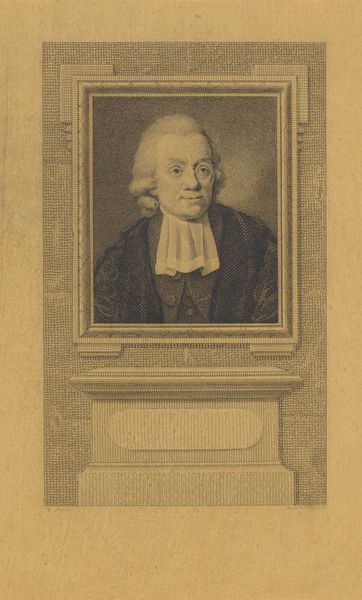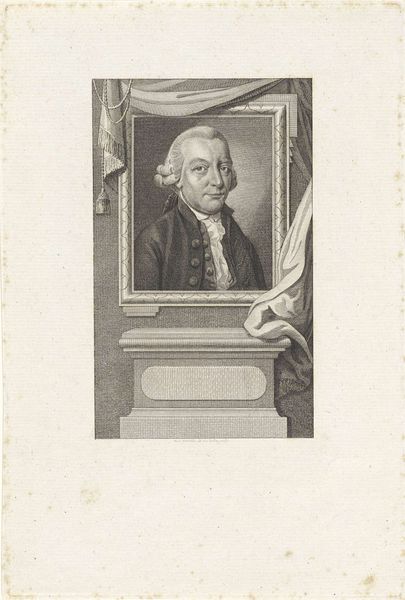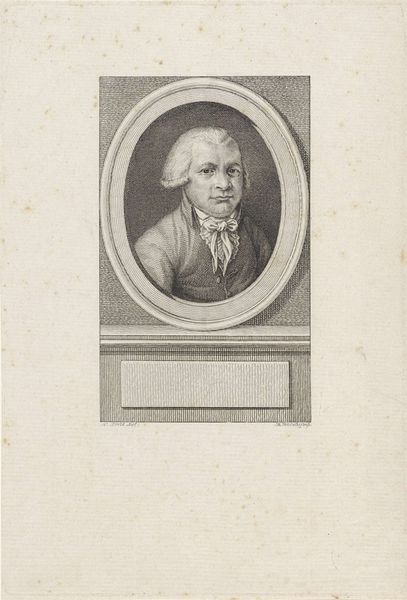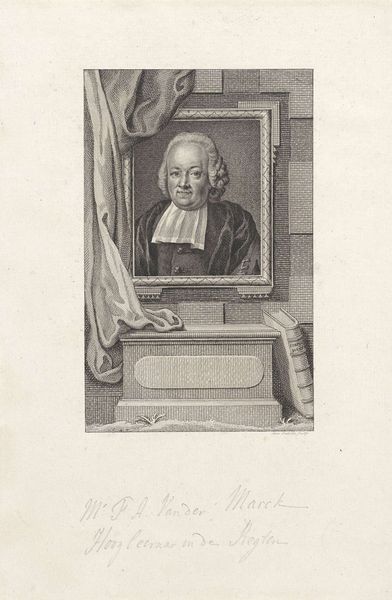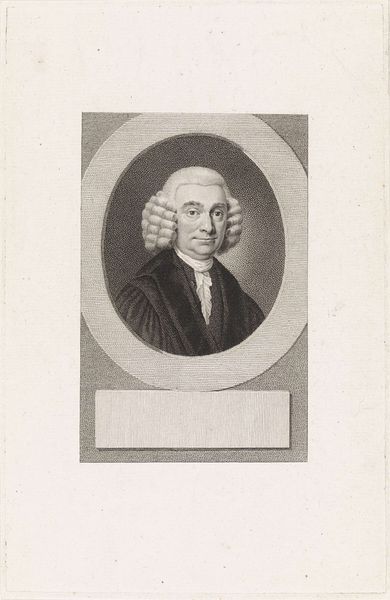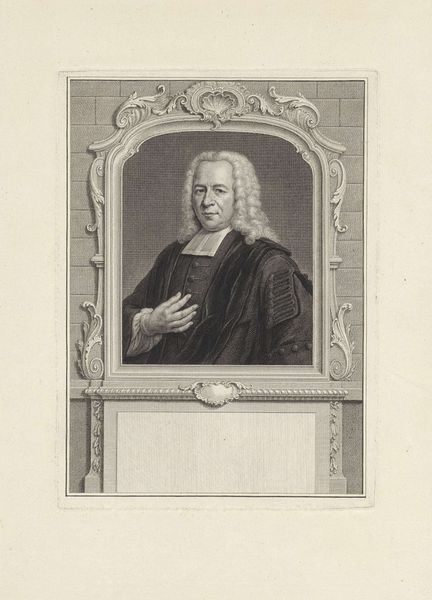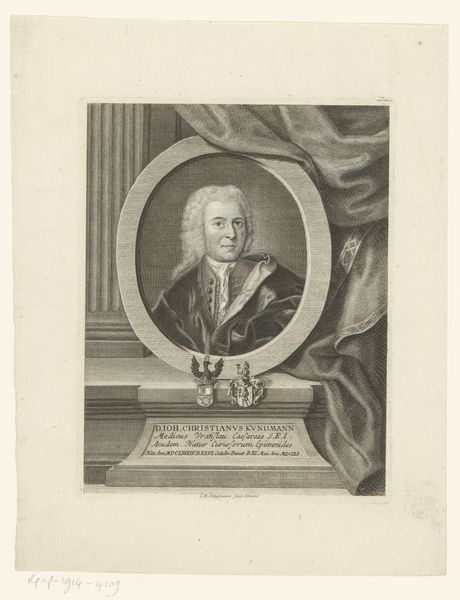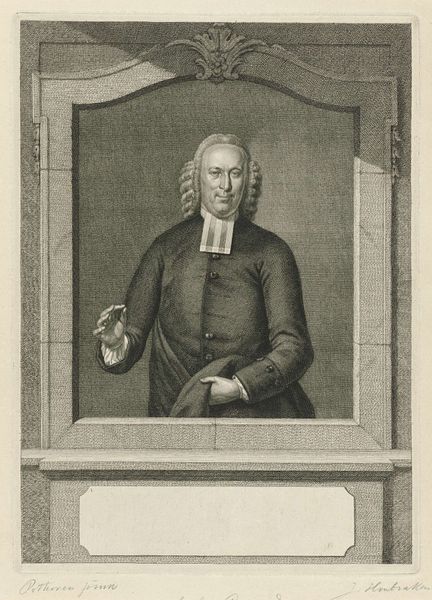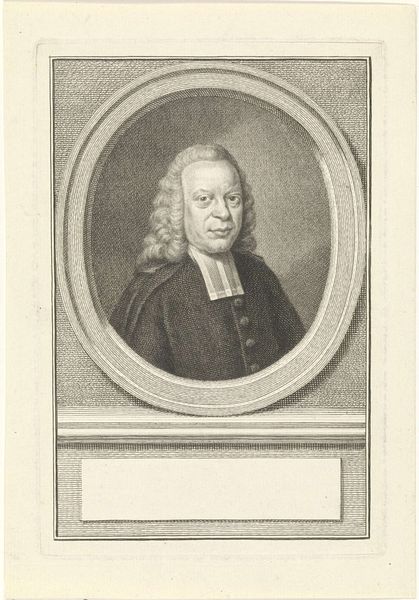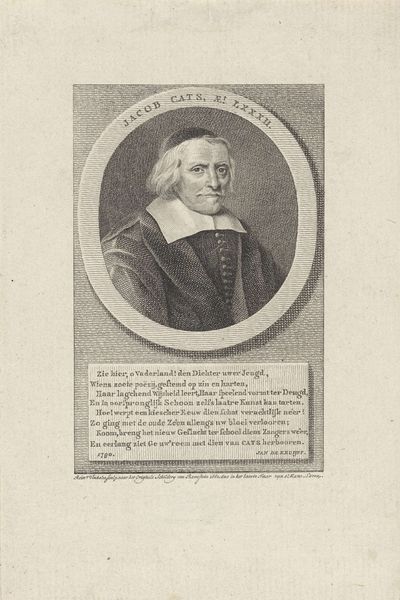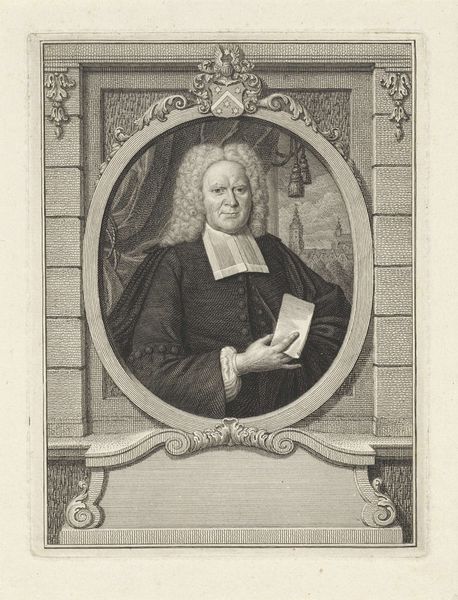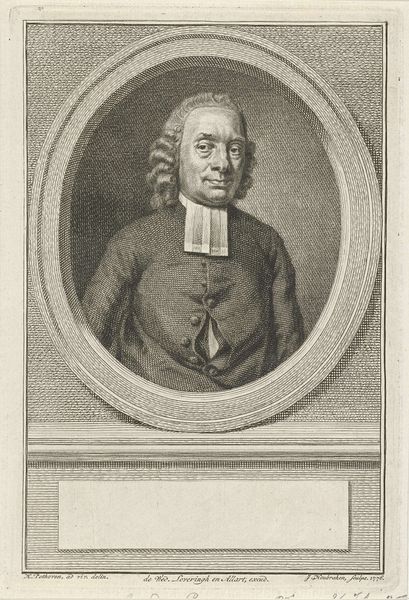
print, engraving
#
portrait
#
neoclacissism
#
toned paper
# print
#
old engraving style
#
academic-art
#
engraving
Dimensions: height 240 mm, width 159 mm
Copyright: Rijks Museum: Open Domain
Curator: Looking at this delicate print, “Portret van Matthias van Geuns,” made sometime between 1786 and 1809 by Reinier Vinkeles, I’m immediately drawn to the way it seems to both embody and question the visual language of authority in that era. It's an engraving, a medium that lends itself to precision and detail. Editor: My first impression is of contained gravitas, a portrait that seems less interested in capturing a likeness than in projecting an image of respectability. The grey tones and meticulously etched lines evoke a certain emotional restraint; the gentleman's eyes hold some story within, but only if we look a little closer. Curator: Precisely. Vinkeles, working within the conventions of Neoclassicism, employs the visual codes of rationality and order to create an image of civic virtue. Matthias van Geuns, framed as though sculpted in stone, appears almost as an ideal. Consider how this imagery reinforced the sitter’s social position, but also the expectations placed upon them. Editor: I am especially struck by the austere frame. It functions as both an architectural element and a symbolic barrier, simultaneously elevating van Geuns and distancing him from the viewer. It gives the portrait a rather impersonal feeling despite the man's compelling eyes. It speaks to the public role that van Geuns occupied, beyond just his individual identity. I can imagine that having an affect on an every day sitter. Curator: Absolutely. This calculated effect connects to the symbolic power of portraiture at that moment. Think about the visual dialogue with earlier Dutch masters; now juxtapose that against the rising Enlightenment ideals of reason and civic duty. The choice to render this on toned paper suggests perhaps, an attempt to soften the severity usually associated with engravings and neoclassicism, to lend it some air of accessibility. Editor: I wonder if Vinkeles wanted the work to convey something of van Geuns’ personality. Engravings are often seen as rather cool, and it could very well be Vinkeles was trying to humanize his sitter. It raises questions about how public image can both reveal and conceal. This tension between access and authority makes the piece intriguing. Curator: Indeed, reflecting on the weight of inherited social and cultural forms, what do they allow, what do they repress, what do they celebrate or censure through public art and memory? Editor: It invites us to consider how art constructs figures of authority and shapes perceptions that carry long term repercussions beyond an individual's lifetime.
Comments
No comments
Be the first to comment and join the conversation on the ultimate creative platform.
